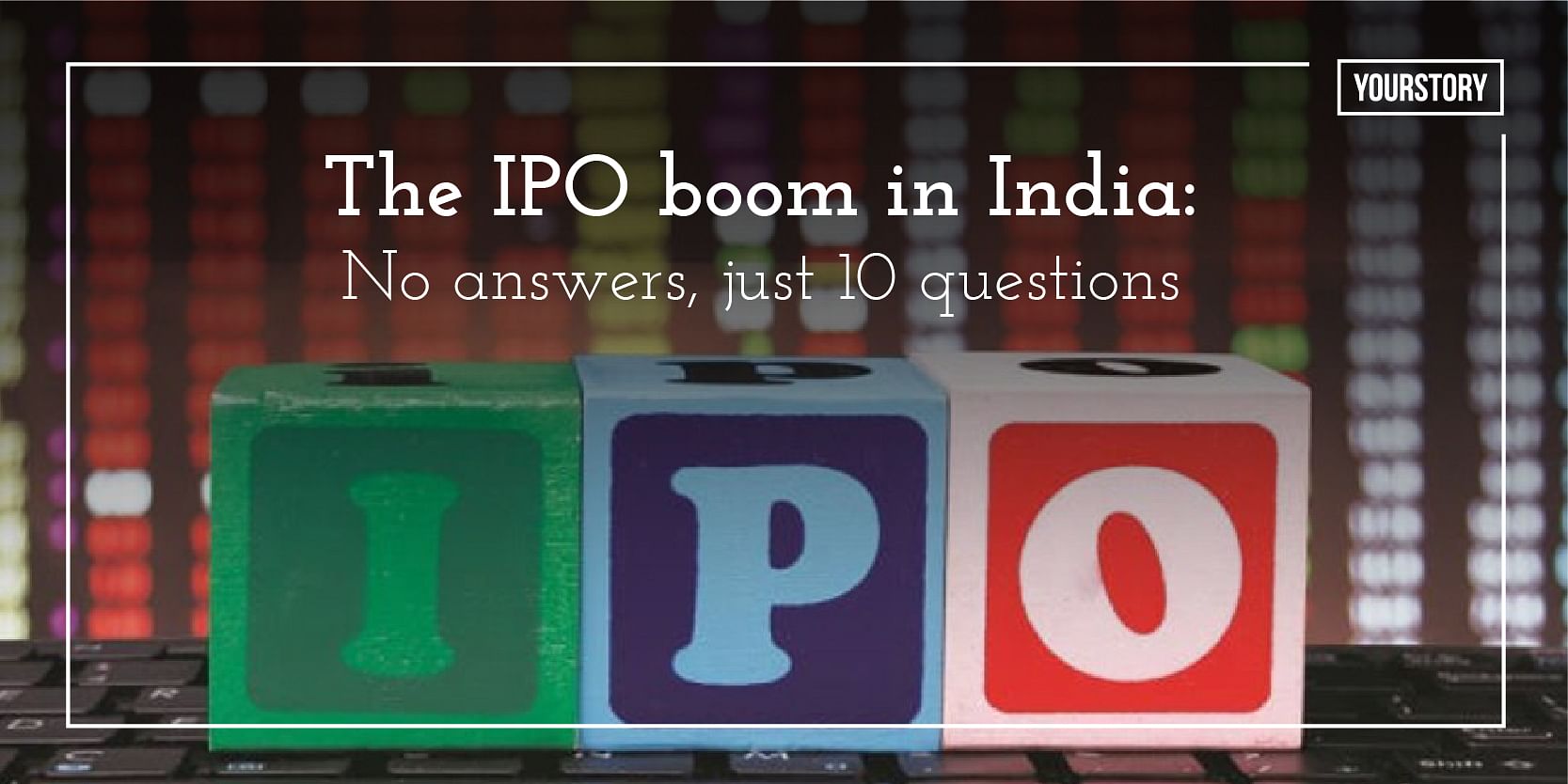This article is a break from the usual style of writing I have followed on LinkedIn. Today, instead of presenting analyses and numbers, I will plead my ignorance.
What I have for you, my respected readers, is a set of 10 questions I have on the IPO boom in India.
Many of them have answers that can be teased out, based on the trends in emerging market IPOs. A few are mostly philosophical queries.
Here we go.
1. Flows or Fundamentals?
With the enthusiastic retail investor response to the Zomato IPO, and the likelihood of similar bullishness on issues by Paytm, Mobikwik, Policybazaar and Nykaa, how do you read this trend?
Is it a general indication of excess liquidity in global markets, which has increased the risk appetite of retail investors (FOMO)? Or is it a sign of mature public markets where a sizeable number of investors are able to look at the long-term growth prospects of these firms, irrespective of their current loss-making status?
2. The role of capital market reforms
In May this year, a change in listing regulations by SEBI, which reduced the holding period of a company’s pre-issue capital by large shareholders and expanded the definition of what/who is classified as a “promoter” served as a catalyst for the listing of unicorns in the public markets.
What else do you think needs to be there on SEBI’s reform agenda to further encourage the listing of India’s tech giants?
3. Are you really comfortable with the public exposure of your assets?
In the US (barring the SPAC listing trend), IPOs have not been the most favoured channel for raising capital by tech companies that began as startups. A key reason is the divergence in vision between institutional investors and entrepreneur-founder.
We have seen this play out in the case of Tesla during 2016-19 and for a bunch of pharma and biotech startups throughout the last decade which became the targets of hostile takeovers by activist investors.
Do you see this founder-investor conflict playing out in India as well in the coming years, as the pressure to create value from public market investors clashes with the desire to take losses to expand scale? Are India’s founders ready for a greater and more regular public oversight of their operations?
4. Is this about China? No, it is not about China. No, it is about China!
Do you think that China’s decisions to put an additional scrutiny on the listing of its startups in local and US markets marks a structural shift in the movement of capital away from China into other emerging markets?
How far will the Indian startup ecosystem be a beneficiary of this risk? How strong are the trends?
5. Will tech IPOs ensure that Sharmaji’s son works in a startup?
One of the less highlighted side-effects of India’s IPO boom in the IT sector in the 1990s was the enormous amount of talent it attracted, as engineering graduates saw the initial employees in these IT companies become fabulously wealthy overnight.
At the ground level, with the buzz around IPOs in the internet sector, are you already seeing a change in social perceptions about working in startups? What could be the longer-term impact of tech sector IPOs on the talent pool?
6. Merger wave in India’s tech markets?
Research on IPO booms across the world (US, UK, Japan, Korea) has shown that public issues by tech giants are quickly followed by listed companies consolidating their tech portfolios and expanding into adjacent sectors through equity-based mergers and acquisitions.
We have already seen early signs of that trend in Zomato’s purchase of a larger stake in Grofers post listing. What are the sectors where we could see consolidation led by listed tech giants?
7. Have VCs unlocked a fountainhead of liquidity?
With respect to VCs, with IPOs opening a major avenue for liquidity locked in India’s private tech ecosystem, will they see enhanced interest from LPs in their funds?
Will a well-understood liquidity option for alternative investments encourage more rupee capital allocation from domestic family offices in India?
8. Getting into more risky stuff?
If we look at the US in the last century, one of the key impacts of startups in the electronics and internet sector going IPO was the increase in the risk appetite of their investors.
Though it failed after a point, the IPO boom of the late 90s and early 2000s also played a role in returning cash to VCs, burnishing their credentials and driving investments in what were at the time risky bets – 4G-enabled platform startups. With this round of IPOs in India, will we also see an increase in allocation of VC capital along a higher risk spectrum, say in deep tech?
9. From monetising public debt to financing innovation?
One of the key missing pieces of India’s startup financing ecosystem has been the relative non-participation of public-sector institutional investors (LIC, pension, and provident Funds) in alternative investments.
These entities have played a major role in providing domestic capital for an innovation ecosystem in Asian economies like Korea, Japan, and lately China. Will the IPO exit route encourage them to allocate generously in private markets (growth stage VC and pre-IPO PE rounds)?
10. A bend in the road for investment bankers?
The companies going IPO in the current round are already pretty mature (billion-plus valuation) and once listed are likely to access other forms of financing (publicly traded convertible debt, bonds and syndicated loans) owing to the transparency their listed price offers to their valuation. In this context, how do you see the impact of Indian unicorn IPOs on the overall deepening of Indian capital markets?
I hope this questionnaire does a decent job of at least covering the gamut of concerns and hopes that India’s IPO boom in technology throws up.
Awaiting your responses!
(Disclaimer: This article was originally published by the author on LinkedIn.)
(Disclaimer: The views and opinions expressed in this article are those of the author and do not necessarily reflect the views of YS.)




![Read more about the article Movers And Shakers Of The Week [March 22-27]: UIDAI’s New Chief & More](https://blog.digitalsevaa.com/wp-content/uploads/2021/03/1LL2FTqZ_400x400-300x300-300x300.jpg)





